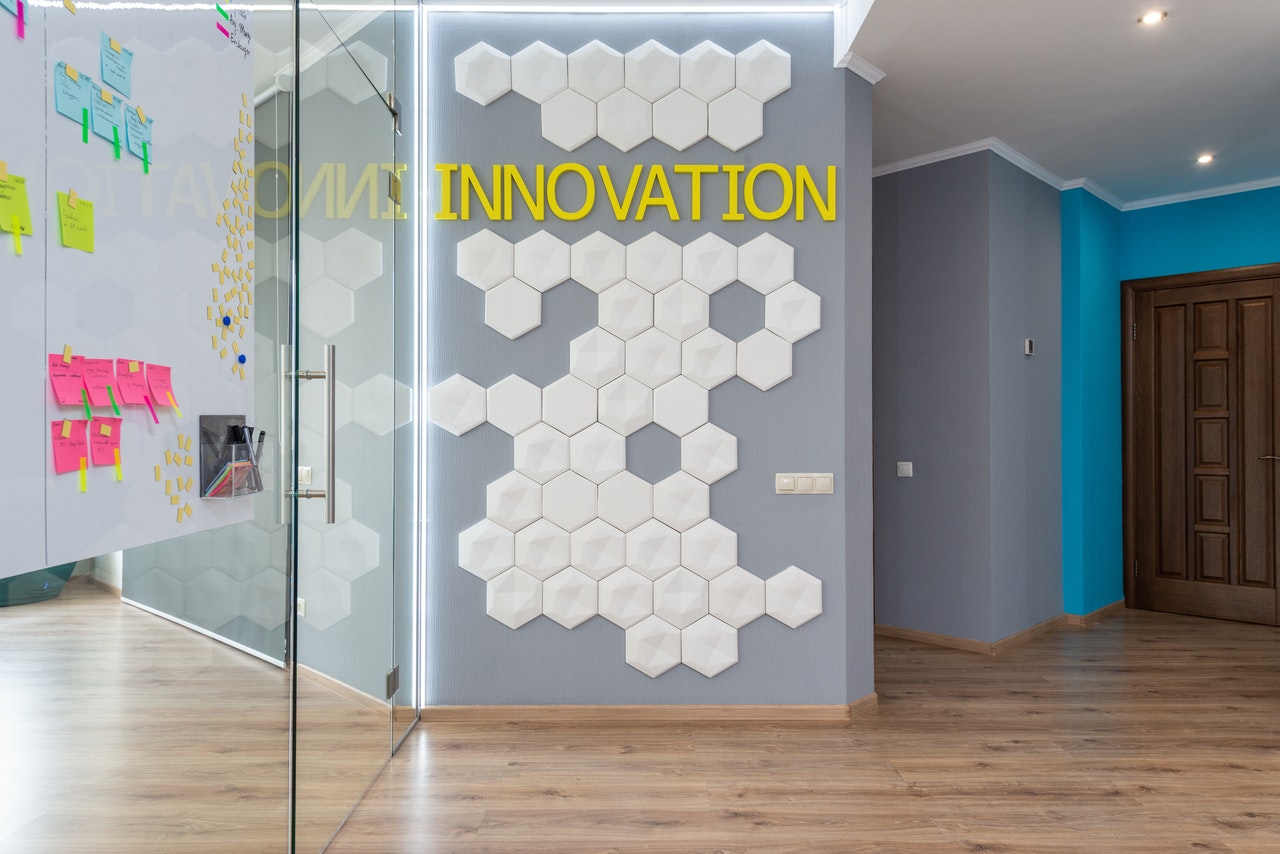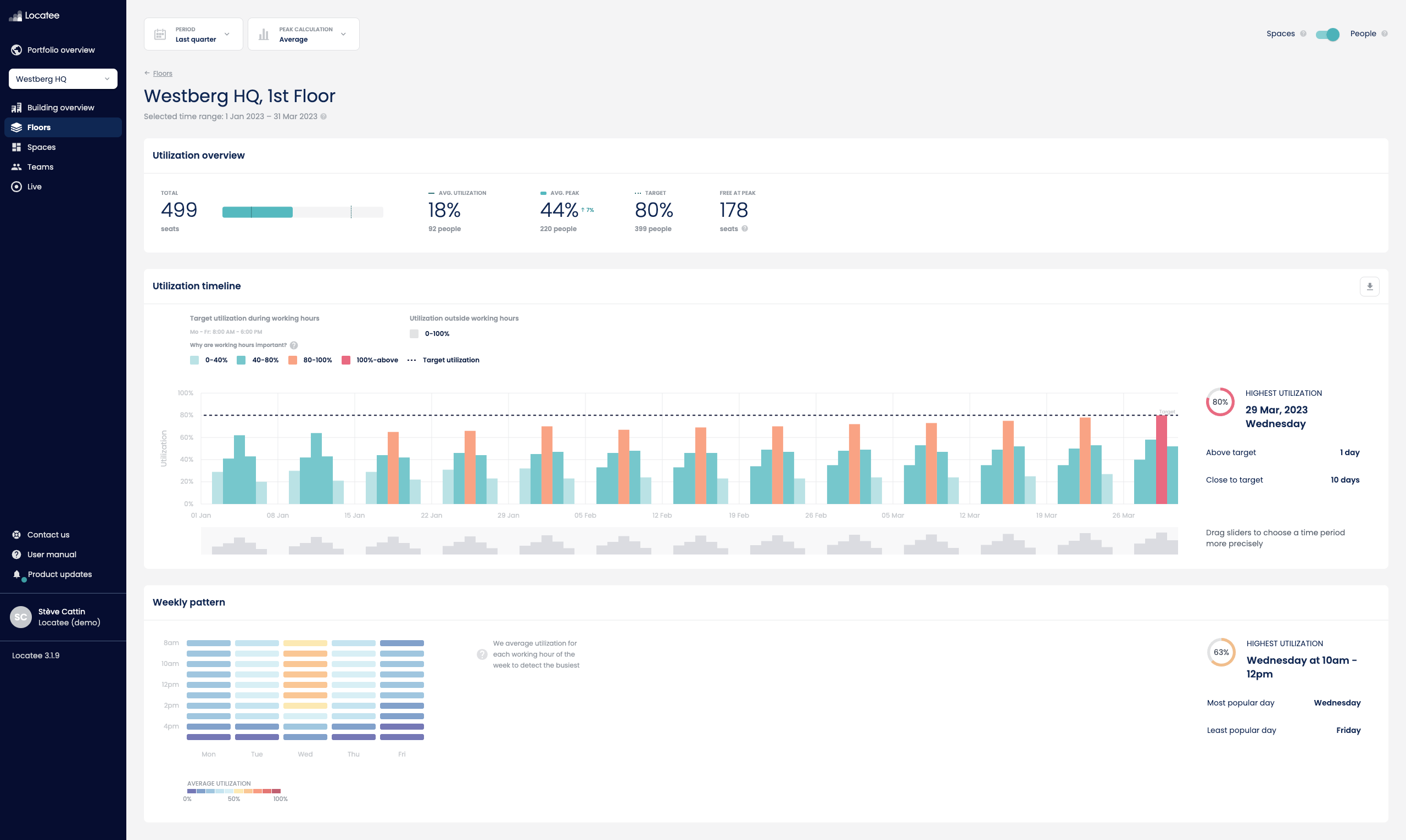The world of work is shifting its focus to becoming more human-centered, and the change is bringing a new set of challenges to address, such as how to best measure workplace experience.
Many organizations had previously set their sights on goals like reducing costs and increasing output. These had little regard for their employees and their workplace experience. Now, these enterprises are in the process of recalibrating their metrics for business success. Alongside workplace experience, employee wellbeing, space diversity and sustainability goals are becoming increasingly important to consider as we shape the way we work.
As essential as these concerns are, they can often feel more abstract and difficult to track than previous workplace goals. The KPIs for Modern Workplace Leaders series will dive into measuring these new concepts in preparation for the return to the office.
In today’s post, we’re showing you different KPIs that your company can use to measure workplace experience in your buildings.
Time spent working remotely
Calculation: % of work hours hybrid employees spend outside the physical office
Two years ago, if you looked in nearly any office, you probably would have seen something similar across the board: a lot of employees sharing the space. With more companies adopting a flexible approach to work, this could be a thing of the past!
Employees have more choice in where they work, how they work, and when they work, than ever before. When workers aren’t forced to come to the office, their actions will be a strong indicator of how good an organization’s workplace experience really is.
After adopting a hybrid work model, it’s expected that people will spend some of that time in a remote setting. But it’s important to observe the working conditions and regulations once they begin to restabilize. Is the majority of your workforce hardly coming into the office? This could mean the workplace doesn’t meet employee needs and expectations.
Meeting Room & Collaboration Space Utilization
Calculation: Weekly average of the hours of utilization of activity based workspaces
Company culture is always evolving—your workplace should be too. As companies grow, employees come and go, and teams continue learning, there will be a need to continually assess how people use spaces in the building.
Perhaps your organization added large meeting rooms to fulfill employee needs five years ago. But post-pandemic, there may be a bigger need for collaboration space as people return to the office after being isolated from their colleagues. With many offices planning to remain hybrid, there could also be a need for more small spaces. For example, phone booths or meeting rooms, will allow workers join meetings with remote colleagues.
Every company will have individual requirements, and they will even differ between locations and branches. Tracking the usage of the different work spaces offered in your office will help you measure workplace experience.
By doing this, you’ll get a clear sense of whether your office is truly serving your employees. It can also inform leaders about which types of workspaces best cater to their needs. A low number of users, or a large gap between booking and actual utilization rates, suggests that the work space type is not useful to your team.

Real World Example – How did Locatee measure workplace experience through meeting room utilization?
Locatee is a hybrid company, and it’s never certain how many people will come into the office on a given day. We wanted to test if we had enough meeting rooms for the needs of our Zurich location.
To assess this, we first defined what “enough meeting rooms” meant. We based it on three criteria:
- Employees find a free meeting room on short notice
- Employees don’t book meeting rooms just to be on the safe side
- There is at least one free meeting room, 80% of the time
We were then able to use the data collected by Locatee Workplace Analytics to understand how workers utilized meeting rooms and answer some key questions:
- How often are all 5 rooms used at the same time?
- Do we have typically empty meeting rooms and how many?
- How many meeting rooms do we have per employee?
- Can the team grow without having more meeting rooms?
- How many meeting rooms do we need for our forecasted growth?
We collected data for a month. At the end, we found it’s rare that all the meeting rooms are used at once. In 28 days, 5 days reached full meeting room occupancy at least once in the day. By understanding this, and how many rooms were available per employee, we were able to conclude that for the moment, we had enough meeting rooms to meet the needs of our Zurich office.
On the other hand, we also learned that based on our expected growth, we would soon cross over the line to not having enough meeting rooms. To stay ahead of the situation, we’ve started assessing options to avoid disrupting the workplace experience as we grow. This includes exploring smaller meeting rooms, implementing stricter meeting room policies, adding meeting rooms, or searching for more office space.
Workplace Technologies Usage
Calculation: # of employees using available workplace technologies
Your company has worked hard to put in individual desk lamps. You have a facilities’ feedback system at every corner. And you have tested every desk-booking tool to find the best one. However, the real question is: do your employees actually use them?
There are always new gadgets and apps that are the next big thing! But employee needs can’t take a backseat to trends.
With many technologies, companies can track the usage over time. If it’s low after implementation, or it drops off after an initial wave of usage, it’s worth digging deeper. These patterns could suggest that an organization is putting its efforts towards changes that don’t make a significant difference to the workplace experience as a whole.
Trends in Employee Requests
Calculation: # of employee requests over time
Expectations will have changed after so much time spent working from home; understanding the new needs of individuals will come from listening to them directly. As people return to the office, it will be critical for employers to be open to suggestions and requests from employees at all levels.
Whether these ideas come from face-to-face conversations, feedback forms, or pulse surveys, companies will receive valuable information on how to make the workplace experience better for their staff.
Additionally, the general trends in the amount of requests received can be indicative of how well office management teams are responding to the needs of the workers in the office. If requests steadily increase overtime, it could mean the office isn’t set up to best serves its users.
Workplace Experience Assessment Rating (E.g. Leesman Index)
Calculation: Leesman Lmi score over time
Companies that are serious about creating the best workplace experience for their offices can benefit from an all-encompassing score, such as the Leesman Rating. By evaluating the work activities of employees alongside workplace impact, the assessment gives a comprehensive score to understand how well the office is fulfilling worker needs.
It’s helpful to understand individual aspects of the workplace experience, but the Leesman Lmi is a score on a scale from 1-100 that provides companies with an overview of everything in a single number. This makes it easier to understand the cumulative impact of the small actions organizations take to improve the office.
Besides having a clear number to measure workplace experience, there’s an added bonus. The Leesman office survey provides information on the physical and service features of the office. These insights will help companies narrow-down areas for betterment.

In Conclusion
The workplace experience of employees can differ immensely from one office to the next. And the impending return to work is sure to bring uncertainty in terms of employee needs and expectations. As always, data will play a critical role in supporting decision-making for the future of work. Keeping track of the right KPIs will help companies understand what actions they should take to support their staff and provide the best workplace experience.
To learn more about how Locatee’s workplace analytics can help you better assess your organization’s workplace experience, get in touch with us.

 10’
10’




